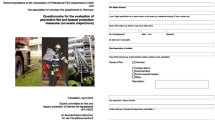Abstract
Fire in residential or office premises can be a serious threat to life and property. There are many existing technologies for detecting fire and thereby raising alarms to alert the residents and appropriate authorities to take the required action. But, a false alarm is a major issue in these technologies. It can cause unwanted panic injuries and even stampede during the evacuation. With public budget cuts, some fire services have seen themselves forced to redefine response procedures. The new measures may not necessarily be in the best interest of society. E.g., Fire departments of certain countries prefer eye witness verification of fire before alerting the authorities. Delay in alerting fire extinguishing services might cost life and could lead to extensive damage to property. This motivated the authors to develop an approach to reduce the percentage of false alarms. The main focus of this study is to detect fire effectively and reduce the rate of false alarms by parameter-based distinction of any type of combustion occurring in a room.
Access this chapter
Tax calculation will be finalised at checkout
Purchases are for personal use only
Similar content being viewed by others
References
Chagger R., Smith D (2014) The causes of false fire alarms in buildings. BRE Global Ltd., Watford, UK. Briefing Paper
Podrzaj P, Hashimoto H (2006) Intelligent space as a fire detection system. In: Proceedings of the IEEE international conference on systems, man, and cybernetics; Taipei, Taiwan. 8–11 October 2006, pp 2240–2244
Lance R (2014) Senior Manager Industry Affairs, Siemens Switzerland Ltd. REDUCING FALSE FIRE ALARMS: A Study of selected European Countries, 07 March 2014
Autian J (1970) Toxicologic aspects of flammability and combustion of polymeric materials. J Fire Flammab 1(239)
Sumi K, Tsuchiya Y (1971) Toxic combustion products of wood and polystyrene. National Research Council of Canada, Division of Building Research, BRN 76, Sept. 1971
Blumenthal I (2001) Carbon monoxide poisoning. J R Soc Med 94(6):270–272. https://doi.org/10.1177/014107680109400604
Henderson Y, Haggard HW (1927) Noxious gases and the principles of respiration influencing their action. Chem Catalog Co. Inc., 212 p
Autian J (1970) Toxicologic aspects of flammability and combustion of polymeric materials. J Fire Flammabil 1(239)
Documentation of the Threshold Limit Values. American Conference of Governmental Industrial Hygienists. Third Edition, 1971, 286 p
Essentials of Fire Fighting and Fire Department Operations 5th edn
MQ-2, MQ-135 Gas Sensor Technical Data, Hanwei Electronics Co. Ltd, 2002
The BOCA Basic Building Code/1970. Building Officials Conference of America, Inc., 5th edn, 413 p
Flame sensor, Phi Robotics Research Pvt. Ltd
DHT22 Technical Data Aosong (Guangzhou) Electronics Co. Ltd
Author information
Authors and Affiliations
Corresponding author
Editor information
Editors and Affiliations
Rights and permissions
Copyright information
© 2021 Springer Nature Singapore Pte Ltd.
About this paper
Cite this paper
Kumar, P., Naskar, S., Raj, A. (2021). Novel Approach to Reduce Rate of False Fire Alarms Through Multivariate Characterization of Fire. In: Bora, P.K., Nandi, S., Laskar, S. (eds) Emerging Technologies for Smart Cities. Lecture Notes in Electrical Engineering, vol 765. Springer, Singapore. https://doi.org/10.1007/978-981-16-1550-4_12
Download citation
DOI: https://doi.org/10.1007/978-981-16-1550-4_12
Published:
Publisher Name: Springer, Singapore
Print ISBN: 978-981-16-1549-8
Online ISBN: 978-981-16-1550-4
eBook Packages: Computer ScienceComputer Science (R0)




